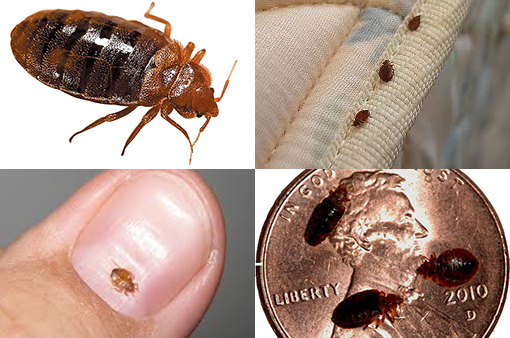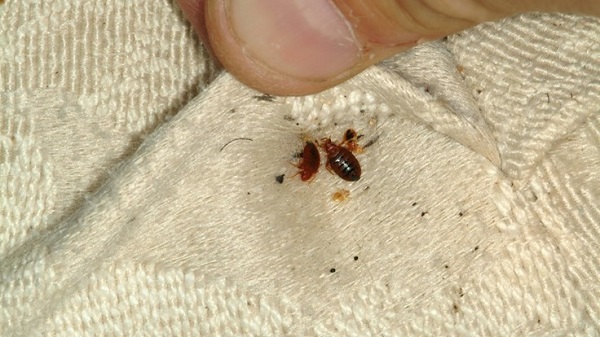Specialist Bed Bug Exterminator: DC Solutions and Heat Treatment
Specialist Bed Bug Exterminator: DC Solutions and Heat Treatment
Blog Article
Checking Out the Science Behind Bed Bug Warm Treatments as a Lasting Bug Administration Strategy
One such approach that has actually gotten grip in current years is the use of warmth therapies to deal with bed bug problems. The intricacies of how warm properly eliminates bed bugs and the more comprehensive ramifications for sustainable parasite management methods make this a subject worth discovering even more.
Bed Insect Heat Therapy Process

Thermal Death Factor for Bed Insects
Revealing bed pests to elevated temperature levels past their thermal tolerance array is important for attaining effective removal in warmth treatment procedures. The thermal death point for bed pests describes the temperature at which these bugs can not survive. Research study indicates that bed bugs start to die when exposed to temperatures over 113 ° F(45 ° C) for a sustained period. As the temperature level raises, so does the mortality rate of bed insects. At around 118 ° F(48 ° C ), bed pests start to die rapidly, with a mortality price of almost 99% within minutes of direct exposure. This shows the level of sensitivity of bed pests to heats and highlights the effectiveness of warmth therapies in eliminating infestations. By getting to and maintaining temperature levels over the thermal death point for bed bugs, parasite administration professionals can make sure comprehensive removal of bed pest populaces, consisting of hard-to-reach locations where chemical treatments might be less effective. Understanding the thermal fatality point for bed bugs is essential for implementing effective warmth treatment strategies and achieving sustainable pest management outcomes.
Advantages of Warm Treatments
Having established the important thermal death point for bed pests, it is crucial to now discover the considerable benefits that warmth treatments supply in properly getting rid of these durable parasites. One of the primary advantages is that warmth can pass through deep right into fractures and holes where bed insects conceal, ensuring that even the most hard-to-reach locations are warmed to deadly temperatures.
In addition, warm therapies are ecologically friendly and non-toxic, making them a sustainable insect management strategy. Unlike chemical pesticides, heat treatments do not leave dangerous residues that can position threats to human wellness or the atmosphere. This element is particularly vital in sensitive atmospheres such as hospitals, colleges, and houses where chemical use may not be desirable.
Additionally, heat treatments have a high success rate in eliminating bed insect problems in a solitary therapy, lowering the demand for multiple check outs and minimizing interruption to owners. This performance not only saves money and time yet also gives satisfaction to those handling bed pest problems.
Effectiveness of Heat Treatment

Warm therapies have actually the added benefit of killing bed insect eggs, which are frequently immune to standard chemical treatments. In general, the performance of heat therapies in eradicating bed bug problems makes them a dependable and lasting bug management technique.
Sustainable Insect Administration Advantages
Implementing sustainable insect monitoring methods provides lasting benefits for both the setting and public health. By using techniques such as heat therapies for parasite control, we can lower the dependence on unsafe chemical pesticides that can have negative effects on communities and human health - bed bug heat treatment. Lasting bug management methods aid in preserving biodiversity by targeting details pests without damaging non-target microorganisms, thus preserving a balanced ecosystem
Moreover, lasting insect management techniques add to the general wellness and health of the general public. By lessening exposure to harmful chemicals utilized in traditional bug control approaches, heat therapies supply a much safer choice for parasite administration in household, commercial, and public areas. This reduction in chemical use additionally aids in preventing chemical residues from polluting soil, air, and water, guarding environmental top quality.
Conclusion
In conclusion, bed pest warm treatments have actually been revealed to be a effective and lasting parasite administration approach. The thermal death factor for bed insects makes them vulnerable to warmth therapies, which have many benefits over traditional chemical treatments. The efficiency of warm therapies in removing bed insect invasions while decreasing environmental influence highlights the possibility of this approach as a sustainable option for bug control.
The bed pest warm therapy procedure entails raising the temperature within infested areas to a level that successfully gets rid of bed insects and their eggs. By getting to and maintaining temperatures over the thermal fatality factor for bed insects, insect monitoring professionals can make sure extensive elimination of bed pest populaces, including hard-to-reach areas where chemical treatments might be much less efficient. One of the key advantages is that warmth can permeate deep right bed bug treatment into gaps and splits where bed bugs conceal, making sure that even the most hard-to-reach locations are heated to lethal temperatures. Unlike chemical therapies that might leave behind immune populations, warmth treatments supply a ecologically friendly and non-toxic service that can permeate deep right into furniture, wall surfaces, and various other hard-to-reach locations where bed insects conceal.
The thermal death point for bed pests makes them susceptible to heat treatments, which have numerous benefits over typical chemical treatments.
Report this page